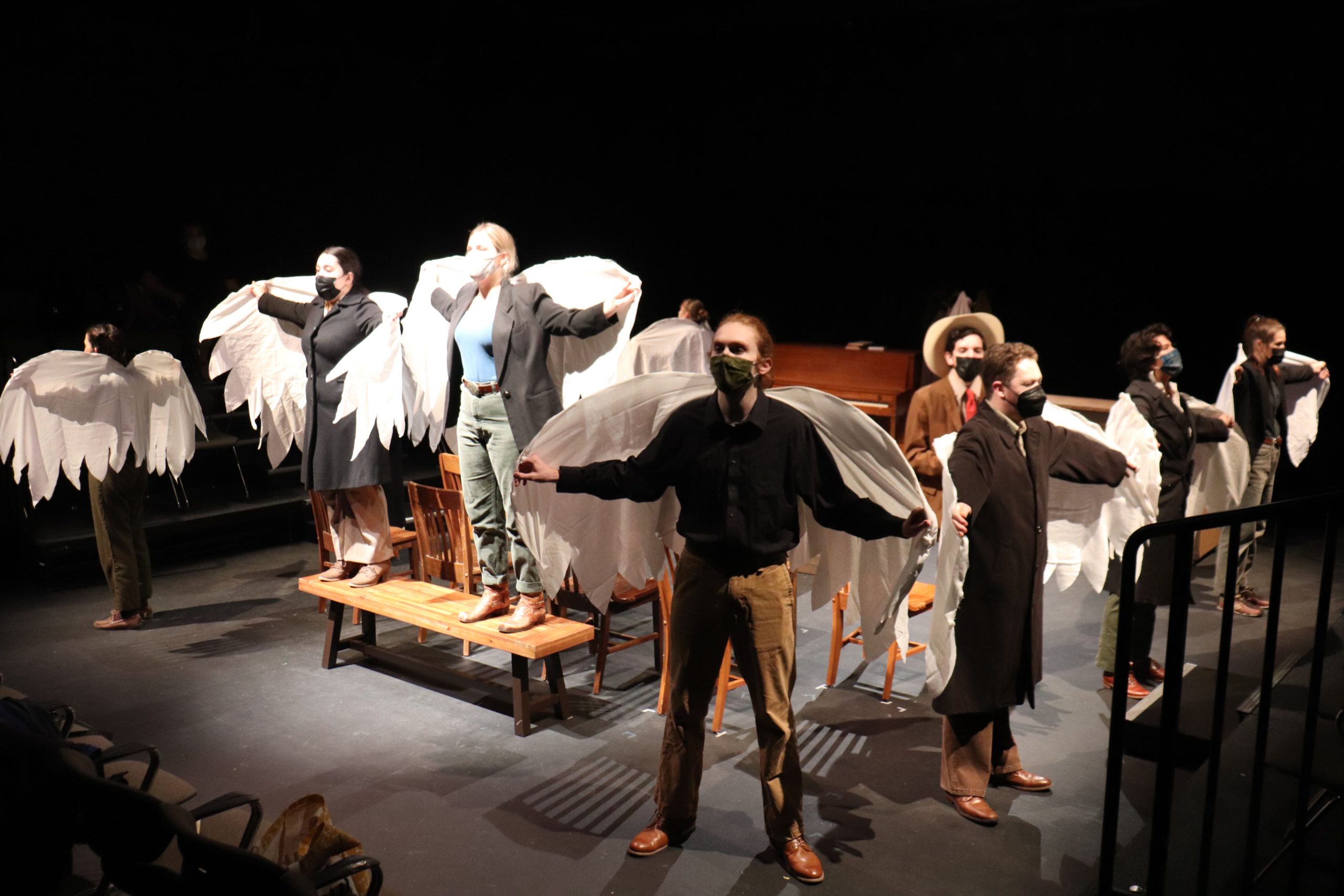Alivia Jones
Reporter
On a chilly Thursday night I attended the final dress rehearsal of The Laramie Project, directed by student Dylan Nicholas Ruggeri. I set my backpack down, got my camera ready and began shuffling from seat to seat, making sure to capture all three audience angles. It was a special experience to see this unique and heartfelt show in a nearly empty house. By the time the night was over I was emotionally and physically drained, but filled with hope.
The play is based on a true story—in fact, each word is taken verbatim from a series of interviews conducted with Laramie residents. In October 1998, Matthew Shepard, a gay university student, was robbed, beaten and left for dead by two young men near the rural town of Laramie, Wyoming. He was found eighteen hours later half-frozen and in a comatose state. While he clung to life, candlelight vigils were held around the country and reporters swarmed the town, inundating it with media attention. Five days after the attack Matthew Shepard passed away.
A year later at the trial his attackers used the “gay panic” defense, arguing that Matthew had made homosexual advances toward them. The defense failed and both men were pronounced guilty and issued life sentences. In the following years state and federal laws were passed to protect gay men and women from similar attacks, culminating in the Matthew Shepard and James Byrd Jr. Hate Crimes Prevention Act of 2009. Shepard’s remains were interred at the Washington National Cathedral. He is remembered as a martyr-like figure in the ongoing fight for LGBTQ+ civil rights.
As director, Dylan Ruggeri brought the script to life, making great use of the Black Box space. The ensemble cast moved fluidly between scenes, rotating focus from actor to actor, while the background characters engaged in naturalistic activities such as playing chess or cards. It was easy to settle into the scenery and imagine myself at a real coffee shop in the heart of Laramie. This sense of intimacy was enhanced by Allison Shelfo’s immersive set design and Destiny Colville’s excellent costuming. One of the highlights of the production was its cohesive color palette and aesthetic.
The Laramie Project was originally created by a tight-knit team of performers, and it is truly an ensemble show. However, Hanne Ferguson stood out as a versatile, emotive performer who did full justice to some of the most difficult moments in the play. They brought tears to my eyes with their impassioned speech as Matthew Shepard’s father and their touching portrayal of the young man who found Matthew’s body.
No production is perfect, even when the cast and crew is this dedicated. The inconsistency of the Midwestern accents was distracting, while on the set a coat tree blocked my view of several important moments. The Laramie Project is also an exceptionally long play, clocking in at around three and a half hours. As a first-time viewer I felt that a third of the dialogue could have been cut to make this a more accessible piece while retaining all the pathos and impact of the original.
A week later, as I write this review, I find myself remembering one line that had a particular emotional impact: “We are like this.” Are we, as Lutes, like the residents of Laramie? Are we homophobic, or blind to homophobia in our community? Is there really a difference? Twenty years after Matthew Shepard’s death, it is nearly impossible for me to imagine the violent assault of a gay student at our university, but I recall the sobering message of another play I saw some years ago: “It can happen here.”




















